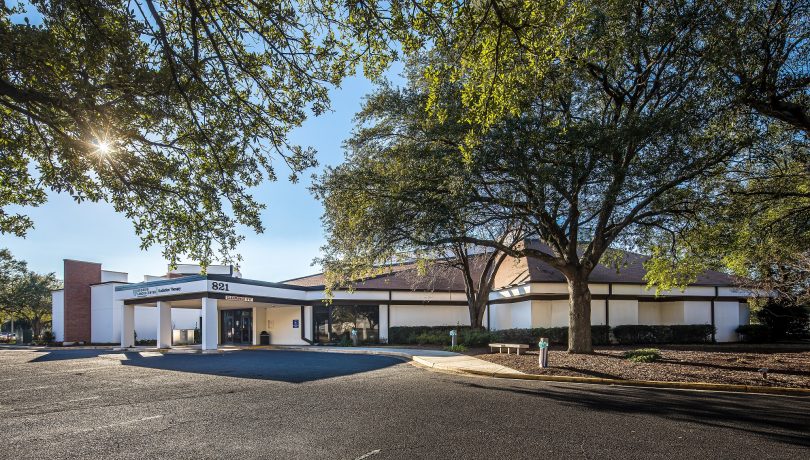“It means so much to all of us at the Georgia Cancer Center team that Governor Kemp and our state legislators would make this investment that will allow us to offer an improved care experience for our patients that will ultimately translate in better outcomes,” said Dr. Jorge E. Cortes, director of the Georgia Cancer Center. “Our Cancer Center radiation therapy team believes each patient’s cancer diagnosis is unique and their recommended treatment should be tailored to their individual situation. These additions will help us accomplish this for each patient.”
Along with the new Radixact linear accelerator, the Cancer Center expanded the existing building to add 3,070 sq. ft. of space, while renovating 2,550 sq. ft. of existing space. The expansion brings more natural light to patient waiting areas and employee workspaces, while adding scenic ceiling tiles as part of improving the overall patient experience. Money from the state was also used to purchase new equipment for the procedure room, three prep/recovery rooms, nurses’ station, and dosimetry planning area. We updated the CT room to soon provide anesthesia for calming purposes for our pediatric population. All other rooms also hold this capability.
“Our patients, their experience, and their care, are the most important priorities for our radiation oncology teams,” said Dr. John Barrett, chief of the Department of Radiology at the Georgia Cancer Center and Medical College of Georgia. “These new pieces of equipment, along with the overall renovation and refresh of our patient areas, will help our employees make sure every patient has a first-class experience when they come through our building.”
The Radixact System is a non-invasive treatment option that delivers image-guided intensity-modulated (IG-IMRT) radiation therapy. Synchrony enables real-time tracking, visualization and correction for tumor motion during treatment. This functionality is designed to provide highly precise radiation dose delivery to tumors that move, such as lung and prostate, and smaller treatment margins around the tumor, minimizing the amount of healthy tissue exposed to high-dose radiation.
“The Radixact System with Synchrony will enable our team to truly provide our patients with the best treatment for them,” Barret said. “The treatment planning and delivery capabilities of the system allow for the highest level of precision with maximal sparing of the nearby normal tissues. The system’s unique hardware and software will facilitate the treatment of organ-confined tumors, locally advanced tumors and metastatic tumors.”
The Radixact System also provides the Cancer Center’s radiation therapists with tools to assess whether adaptation of radiation delivery during the course of treatment is needed because of changes in tumor size and patient anatomy. The team looks forward to using the Radixact System to efficiently deliver precise and accurate radiation treatments to more patients each day.


